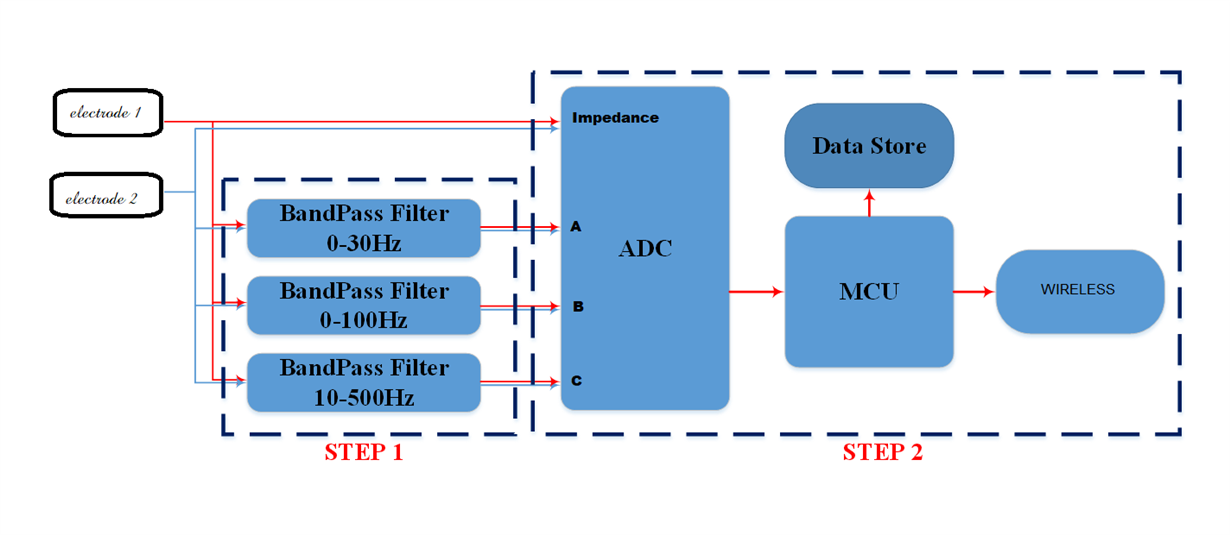I am trying to measure the lead impedance using AC lead-off detection (6uA, 31.2Hz). The attached file shows the diagram of my electrode connection to the circuit. Specifically, the signal transferred from the single electrode to one pin (e.g., pin 1) will be input into 3 different channels (e.g., channel 1, 3, and 5) in the ADC. Moreover, before digitizing the signal, I also add different analog filters and amplifiers corresponding to each channel in front of the Analog-Front-End (AFE) IC. Summarily, in my design, there are 3 channels used to receive and process the single input and 1 channel used to measure the impedance of that single electrode.
As a result, I currently have 2 problems: (1) the measured impedance is incorrect and (2) the measured signals of interest are also affected by noise comes from the channel which is used to measure impedance. Could you help me know
1. What are the reasons of these problems? (My thoughts for problem (1) and (2) are that the three channels mutually affect and the measured signals are affected by noise coming from the channel used to measure the impedance, respectively.)
2. Is there any possible solution to help overcome these problems without changing the design of my board?


